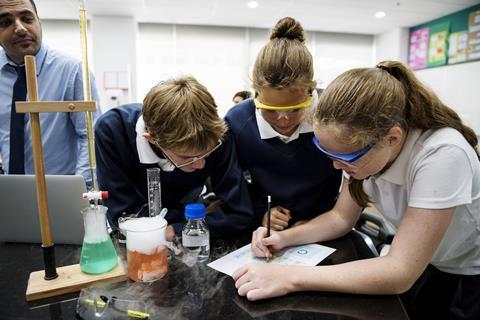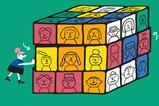Technology is great and remote teaching was a life saver, but we need in-person teaching. This is why

2020 was a watershed year for education technology. For decades, technological innovations have threatened to completely overturn the way we teach – but never before has our culture of teaching been so upended and come to completely rely on technology. Without technology, learning and student-teacher interactions would have been impossible during the Covid lockdowns.
This breakneck, and often painful, transition to a new paradigm of teaching led to several breathless prophecies of the long-term demise of the classroom as the hub of teaching. Why do we need a physical building? Why do teachers and students need to congregate in one place? Why should we put in all that logistical effort and expense when we now know we can do it all online? Why should we keep classrooms?
The truth is students need classrooms. Online and hybrid teaching models are part of our toolkit now – and they are a useful addition – but nothing can replace the value of classroom learning for learners.
The skill in teaching is not in having a great environment to teach in, it’s in how great teachers use that environment to enhance learning for students
The relationships, conversations, interactions and stimulation are all things that are harder, or can’t be replicated at all, in online teaching. Peer-to-peer interactions in a classroom support both learning and social development.
Learning environment
Simply looking at the differences between classrooms can predict behavioural–social outcomes for students. A 2012 study that looked at factors affecting student development in key stage 3 in England found, ‘students who rated their secondary schools more highly on the physical “school environment” (which included attractive buildings, classroom decoration, and standards of cleanliness) had better social–behavioural outcomes for self-regulation, pro-social behaviour and reduced anti-social behaviour.’ Classroom environment ranked alongside quality of teaching, behaviour climate and school resources as an important factor in outcomes for students.
Classrooms are inclusive. They’re a consistent and structured learning environment for all students, no matter their background, home environment or access to technology. In-person classroom teaching helps break down barriers between students and supports teachers in building relationships with their pupils.
Take a moment to pause and consider the benefits of the classroom
However, the skill in teaching is not in having a great environment to teach in – just as it is not in having great resources, books or equipment – it’s in how great teachers use that environment to enhance learning for students. Intentional use of the classroom, both as a physical space and in the social interactions it allows, is so important.
So, it’s worth taking a moment to pause and consider the benefits of the classroom, and perhaps how you can make the most of the unique opportunities you have when you face – in person – your next class.














No comments yet